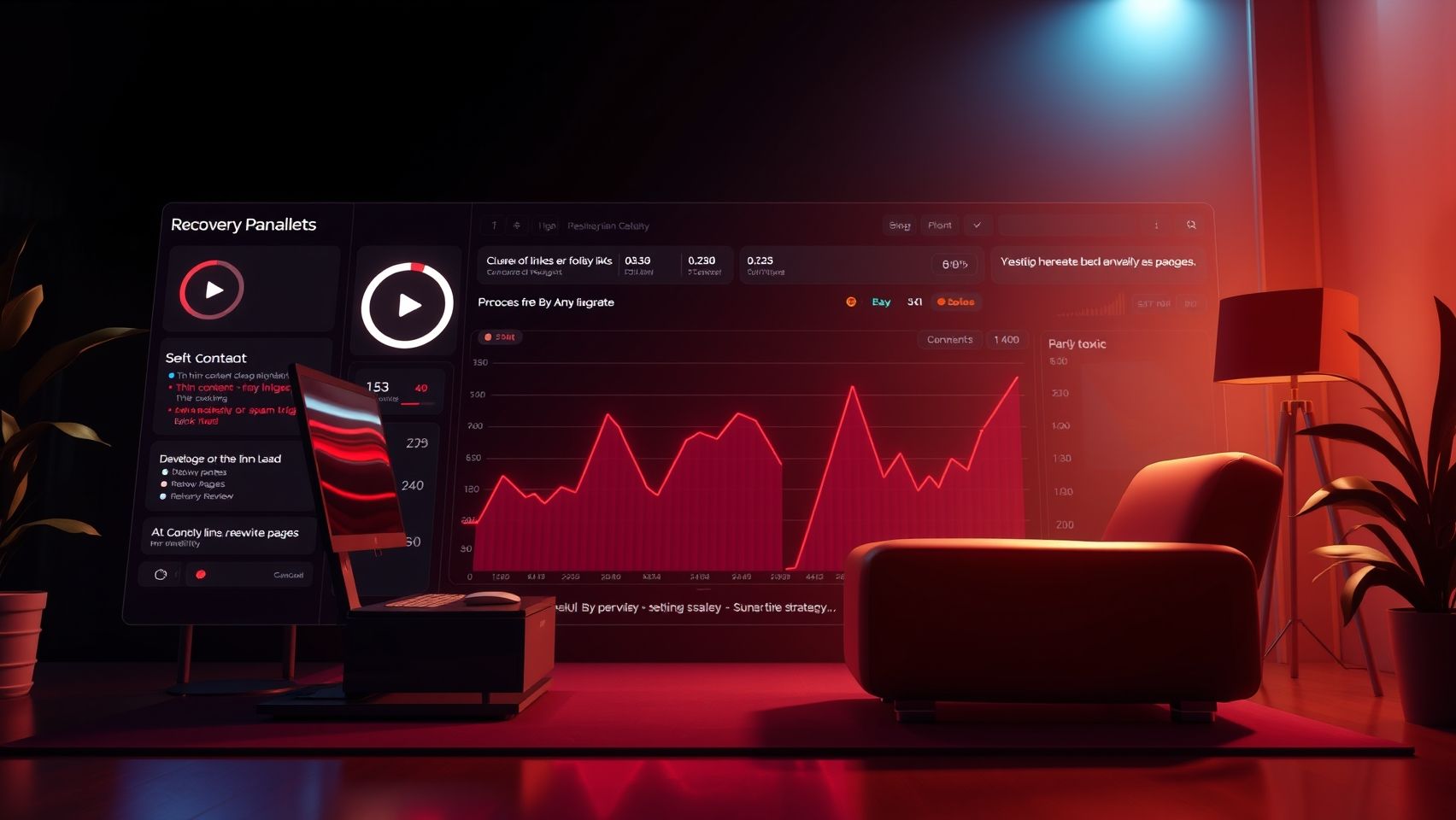Getting a Google penalty can feel like your entire business has been stopped overnight. Many Indian businesses ranging from small shops to growing online stores face sudden drops in website traffic because of these search engine penalties. Learning how to recover from Google penalties is very important for SEO success. If your website rankings have gone down after an algorithm update or manual action, there are step by step methods to bring your site back. In this guide, I will explain these recovery techniques in very simple language so that anyone can follow and fix their site effectively.
What is a Google Penalty
A Google penalty happens when the search engine finds your website breaking its rules. Sometimes it is because of spammy backlinks, duplicate content, keyword stuffing or poor user experience. There are two main types of penalties you need to understand before recovery.
- Algorithmic Penalty - This happens automatically by Google algorithm updates like Panda or Penguin when low-quality content or backlinks are found.
- Manual Penalty - This is given directly by Google reviewers when they see your site has violated guidelines.
How to Identify if Your Website Has a Penalty
Many times people confuse normal ranking drop with a penalty. To be sure, check the following:
- Log into Google Search Console and check Manual Actions tab.
- See if impressions and clicks drastically dropped after an update.
- Compare your competitors. If they are stable and you alone dropped, a penalty is likely.
Steps to Recover from Google Penalties
Let us go step by step in fixing penalties. This is a practical action plan that anyone can try, whether you are a freelancer, small business or eCommerce seller.
Step 1: Audit Your Website
Do a full check of your website. Use tools like Ahrefs, SEMrush or free Google Search Console data. Look for duplicate pages, broken links, unnecessary keyword stuffing and suspicious backlinks.
Step 2: Fix Content Quality Issues
Google always rewards original and useful content. If your site only has copied or spun articles, remove them and write fresh posts. Focus on user-friendly answers. Example: A medical shop site should write about common health tips, not keyword stuffed lists. Always remember content must solve real queries, not just rank.
Step 3: Remove or Disavow Bad Backlinks
Many Indian businesses hire cheap SEO agencies who build spammy blog comments and directory links. These links can cause penalties. Use backlink audit tools to find those links and ask webmasters to remove them. If not possible, upload a disavow file to Google. This will tell Google to ignore those harmful backlinks.
Step 4: Improve Website Experience
A penalty is also given if your site is too slow or not mobile friendly. Run a test on Google PageSpeed and fix issues. For example, if you are running a tuition service website, make sure your site loads well on mobile because most students and parents will search on phone.
Step 5: Submit a Reconsideration Request if It is Manual
If Google has given you a manual action, then once you fix the problems, you can send a reconsideration request from Search Console. Clearly explain the steps you took, show proof like removed links report or new content updates.
Quick Mini Guide for Recovery Actions
| Problem | Solution |
| Duplicate content | Rewrite with fresh and useful answers |
| Spam backlinks | Remove or disavow them |
| Keyword stuffing | Use natural keywords flow |
| Slow loading site | Optimize images, use fast hosting |
| Thin content | Add more practical details |
Automation Tools for Faster Recovery
Automation tools like n8n can connect your SEO checks with reporting. For example, you can set up a workflow that automatically collects broken links, poor performing pages and sends weekly reports to your email or WhatsApp. This saves time instead of manually checking everything.
Using AI for Content Rewriting
AI tools like ChatGPT are very helpful for rewriting low quality pages. You can provide old content that caused penalty and generate new simple and unique versions. But always check manually before publishing to ensure accuracy and local language correctness.
Example: Real Recovery for Local Business
A local sweets shop website had copied recipes from bigger sites. Traffic dropped suddenly. We removed copied recipes, added original tips like how to make laddus softer in hot weather, added WhatsApp ordering option for customers, and improved loading speed. Within few months, rankings and customers returned back without penalty.
Preventing Google Penalties in Future
- Focus on genuine high quality backlinks like guest posts or collaborations.
- Keep content 100 percent unique and value-based.
- Regularly audit site using free tools.
- Never overdo keyword usage.
- Always monitor user behavior like bounce rate, page load, session time.
Outside Resource for Help
If you want to read more about Google guidelines directly, you can check the official guide on Google Search Central.
Final Thoughts by Niranjan Yamgar
Recovering from Google penalties looks scary at first, but if you follow systematic steps, it is very much possible. I have seen many Indian businesses recover traffic and sales by focusing on proper SEO practices. Remember, shortcuts may give quick results but in the long run only honest and useful work will stay. If you ever feel stuck, you can always discuss with a trusted digital marketing expert. For full business growth and website improvement you can contact my team at professional SEO marketing agency. Stay consistent, keep learning and soon your site will be back on top results.
